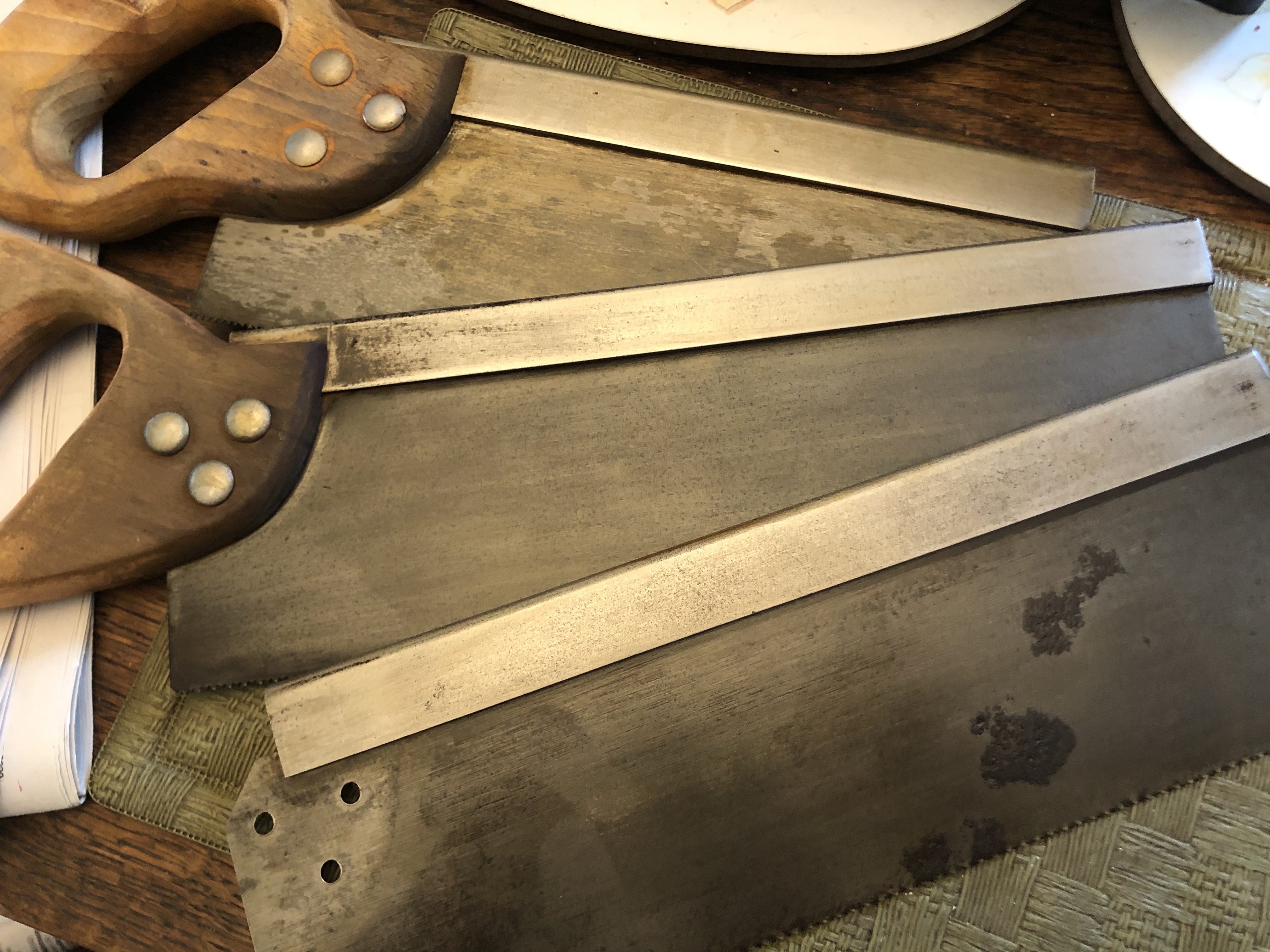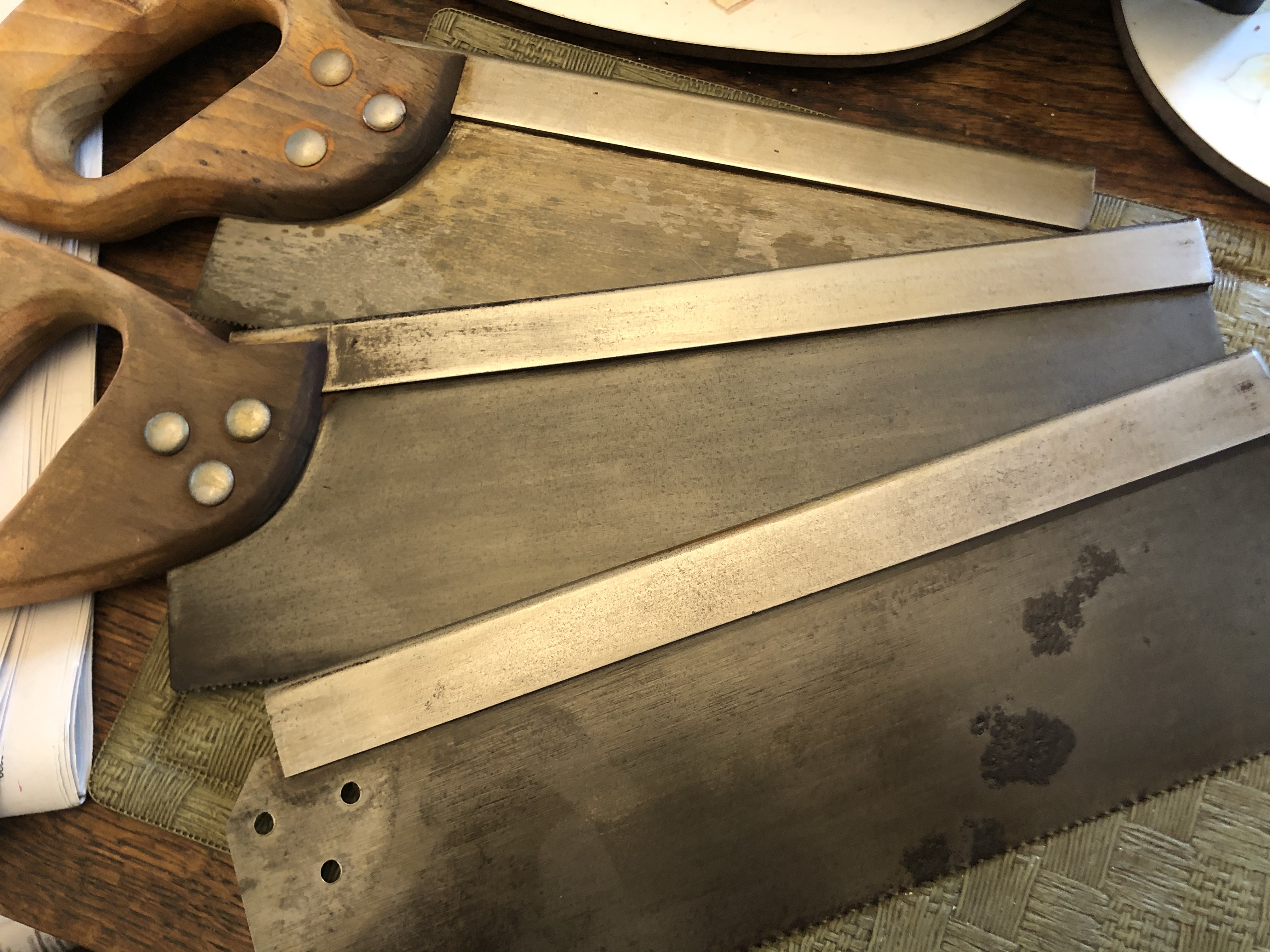billw
The Tattooed One
I've just removed a load of rust off three handsaws using vinegar, and then wiped them down and oiled them. However there's still a lot of non-rust markings on the steel, what's the best way to get them all shiny again?











dannyr":19ynilyq said:More questions than answers:-
After a scrape as suggested, and an abrasive paper, I finish off with a Garryflex block (rubber loaded with emery-type grit) - medium grit - which gives a nice dull and un-scratchy finish quite speedily - anyone else use these? Any longer term problems? After that a few drops of engine oil rubbed in.
Alu foil sounds interesting, but I guess in theory remaining Alu could electrolytically react with the steel and cause more rust - what do people think?
Enter your email address to join: